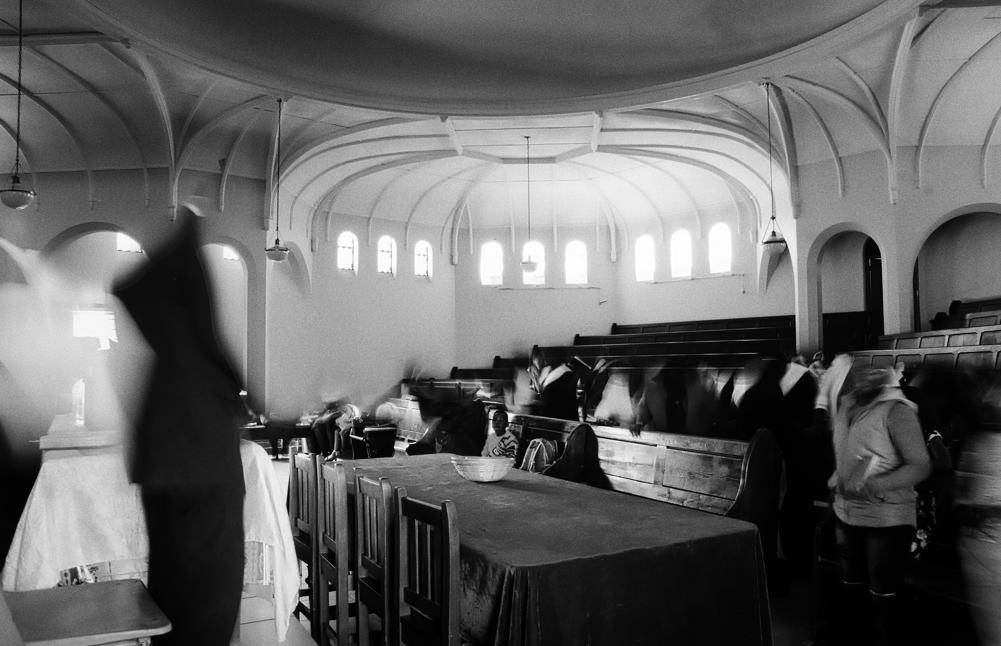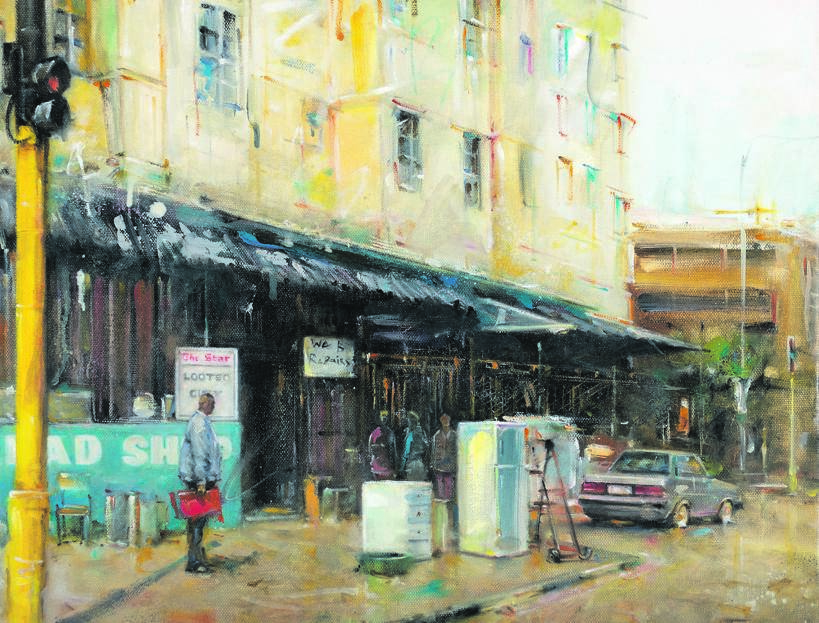
For those intimidated by gallery spaces and artworks hanging on white walls, this exhibition – exploring the land question – promises to resonate with everyone, writes Welcome Lishivha.
‘If your mind can make sense of the paint you see on canvas then you are already engaging with art,” says Katlego Lefine, who co-curated, with Annali Dempsey, Conversing the Land, an exploration on land guaranteed to resonate with everyone.
“Even though art has moved from being elitist to being a lot of more accessible, it has still largely remained in white ivory towers,” says Dempsey. Conversing the Land is an exhibition worth a visit for anyone interested in the land question. It offers a range of artworks that largely evoke three themes: inhabiting the land, the land worked and conflict in the land.
In addition to the artworks by the 10 artists selected from the joint MTN and UJ Emerging Artist Development Programme, the exhibition includes some established names in art, some of whom are dead. There are artworks by Alfred Thoba, Maggie Laubser, Jacobus Hendrik Pierneef and others whose works have been brought into contemporary conversations about land.
The exhibition forms part of a series of conversations which started three years ago between UJ and MTN. The first was Shifting Conversations, focusing on post-colonial art, the second was Continuing Conversations, focusing on portraiture and explored identity and reality. With this year’s Conversing the Land, Dempsey says that between UJ’s and MTN’s collections, they had to go through 3 500 to 4 000 artworks to narrow everything down to the exhibition as it is today, with about 80 works.
The winner of the Emerging Artist Development Programme, Siyabonga Mahlaba, won for his two photographs which “succeed in presenting faceless churchgoers against the physical decline of places of worship in a most ephemeral and haunting way, alluding to the disparity between racism and religion, but also with the hope of rebuilding”, says Dempsey. Other works from the development programme centred on the ecological perspective left by humans on the land, as well as examining identity and the inner landscape.
The inhabiting land themed works include Osiah Mosekoameng’s Traditional Wedding with women dancing joyfully around a circle; Simon Mnguni’s Upper Umhloti River shows a couple taking a stroll by the river with huts in the background. Sithembiso Sibisi’s Afternoon joyfully captures idle township life. Thoba and Gerard Sekoto’s oil paintings depict people in what seem to be urban landscapes. You’ll also find some beautiful photographs by Jansje Wissema of people in District 6 before the evictions.
On working the land, Pierneef, Laubser, Walter Battiss and Neil Badenhorst offer pristine paintings of landscapes. Conflict in the Land offers various images, such as Lebo Magolego’s The Elephant in The Room photograph, capturing the melancholy of a society gone wrong, while Michelle Monareng’s video installation of a picture hauntingly and slowly coming to life, like ghosts, is in an old-school printer style. Jeannette Unite collects colour pigments from various areas and uses them and other mediums to write about and draw the destruction of the earth.
The theme also features works that spark the dialogue about the preservation of the earth, with Tebogo Moche’s photograph of three young black boys playing dangerously on mine dumps, Alan Crump’s Earthworks depicts soil with a red pigment that represents dried blood and Shayna Rosendorf’s digital photos titled Why Invest In Gold if it leaves you with nothing to drink? This forces us to think about the role of gold mining and the increasing global water crisis.
Pippa Skotnes’ work, White Wagons Portfolio: Wagons with Flags, depicts the violence of the settlers in their quest to take over our land.
The conflict in land also conveys Richard Kilpert’s God Bless Our Home, with the famous dolosse that characterise Port Elizabeth’s coastline and people in red fighting, made from pastel, chalk and charcoal on paper.
Some pieces evoke a sense of peace, memory and belonging, such as Wendy Malan’s Soos Rook Sal Ons Sweet, with a vast and open land with open skies and stars floating above. And while Lefine found some of Sibisi’s works to be “too touristy”, I especially enjoyed their peaceful demonstrations of black people inhabiting the land with a refreshing sense of ease.
Conversing the Land is at the UJ Gallery, Auckland Park, Johannesburg, until November 27
 | ||||||||||||||||||||||||||
Get in touchCity Press | ||||||||||||||||||||||||||
| ||||||||||||||||||||||||||
| Rise above the clutter | Choose your news | City Press in your inbox | ||||||||||||||||||||||||||
| City Press is an agenda-setting South African news brand that publishes across platforms. Its flagship print edition is distributed on a Sunday. |




 Publications
Publications
 Partners
Partners











